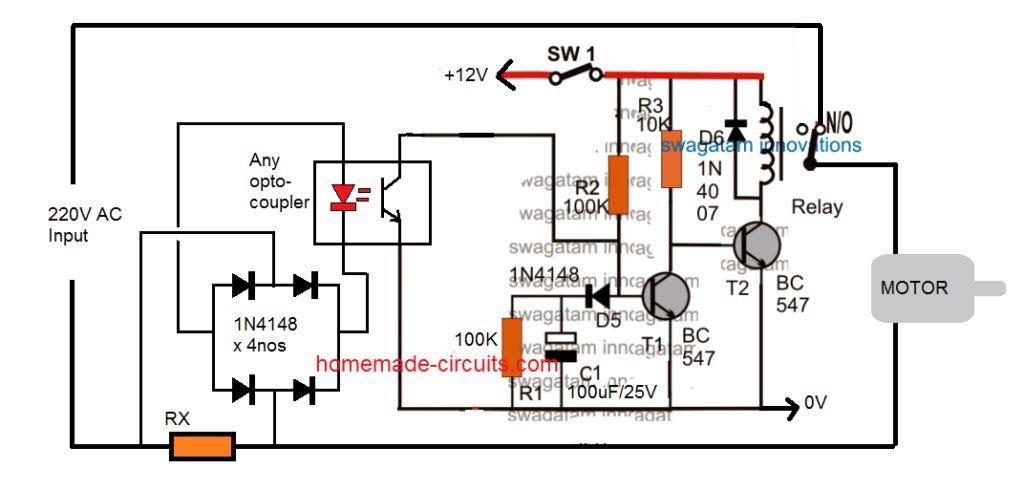Commonly dry run circuits mostly rely on water detection, which renders the designs quite antiquated and laborious.
In contrast to these concept, the subsequent one relies on either load or current sensing to provide the dry run protection function. As a result, it is contactless and requires no direct touch with either the water or the motor itself.

How it Works
Here, a straightforward delay ON timer circuit is created using the two transistors and related parts. Because C1 first grounds the base drive of T1 arriving via R2 while C1 charges, when SW1 is turned on, the transistor T1 stays turned off.
As a result, the relay and T2 remain turned on. The pump motor is turned on by the relay's N/O. The motor is permitted to operate for a certain amount of time based on the number of C1. The motor operates unloaded with a comparatively low current flowing through RX in the event that there is no water. The opto-coupler LED switch remains off as a result of RX's inability to generate sufficient electrical potential across itself. This permits C1 to fully charge without interference throughout the allotted time period.
T1 turns ON immediately as C1 is completely charged, which turns T2 and the relay OFF. In order to prevent a dry run, the motor is ultimately turned off.
In contrast, if the motor receives a regular supply of water and starts pushing it routinely, the motor is immediately loaded, increasing the amount of current it uses.
This generates enough voltage across the resistor Rx, according to its predicted value, to turn on the opto-coupler's LED. The delay ON timer is turned off and C1 is prevented from charging after the opto is turned on. For as long as there is water available, the motor can keep trying to function thanks to the relay's continued supply of 220V.
Leave a Reply